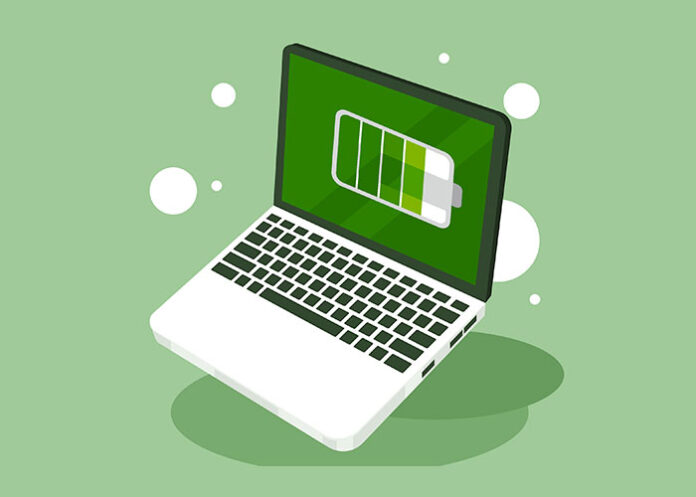The battery life of a laptop can spell the difference between deadlines met and missed, most importantly if you’re on the move. Whether you’re working, studying, or catching up on your favorite series, running out of juice at the most inopportune time becomes irritating.
Everybody knows that even some modern laptops are meant for efficient use, yet this does not stop the poor and bad use habits that kill the battery at record speed. Fortunately, only a few minor adjustments and wakeful use can go a long way toward extending a laptop battery’s life.
13 Tips to Extend Your Laptop’s Battery Life
1. Adjust the Brightness
The display is one of the main components that consumes the power of a laptop. The brightness of a screen can be reduced to cut down on significant power consumption. Shortcuts on the keyboard settings menu can be used to set the brightness at a comfortable yet lower level.
2. Use Battery Saver Mode
Most operating systems have a battery-saving or power-efficient mode that optimizes performance and reduces usage of power. One can activate this mode when running on battery power to extend its life.
➢ To enable the saver mode:
- Windows: Settings > System > Power & Battery and turn on “Battery Saver”.
- macOS: System Preferences > Battery and select “Low Power Mode”.
3. Close Unnecessary Features
Close features like Bluetooth, Wi-Fi and backlit keyboards consume energy even when not in use. Turn them off if you don’t need them to conserve power.
4. Close Unused Applications
Running multiple applications in the background can drain your battery down. Unnecessary programs in the background should be closed while you can substitute them with lightweight applications that consume less energy than resource-intensive applications.
➢ Steps to close unnecessary applications:
- Windows: Use “Ctrl + Shift + Esc” to call up the task manager and eliminate all the unnecessary tasks running in the background.
- macOS: Enter “Command + Option + Esc” select the app and click “Force Quit”.
5. Manage Startup Programs
Whenever a user powers on a laptop some programs automatically start opening and this leads to the waste of energy unnecessarily. One must disable all startup program tasks running in the background through the task manager or system settings.
➢ How to Manage the Startup Programs:
- Windows: In task manager, go to the Startup tab and disable unnecessary programs.
- macOS: System Preferences > Users & Groups > Login Items and remove unnecessary items.
6. Limit Multitasking
Using multiple applications at one time can also decrease the efficiency of your laptop. If you use multiple apps increases CPU and RAM usage which leads to draining your battery faster. By focusing on one task at a time one can optimize energy consumption.
Also Read: How to Control PC from Phone
7. Disable Adaptive Brightness
Deleted: Every laptop has adaptive brightness, which adjusts the screen brightness based on the ambient light. This can be useful in some situations—like when you’re trying to study at night or work in a dark room. But for tasks that require consistent lighting, like using AI Text-to-Video tools, It can be annoying if you find yourself adjusting back and forth between getting enough light for reading and having too much glare from flashing screens.
8. Keep Your Laptop Cool
Heat is one of the most important factor that leads to battery draining. Ensure your laptop is well-ventilated and free of dust. Avoid using it on soft surfaces like beds, which can block air vents.
➢ Steps for keeping Laptop Cool:
- Use a cooling pad or put your laptop on a hard or flat surface.
- Clean the vents with compressed air to remove dirt.
9. Unplug Peripherals
Unplug all the external devices, such as USB drives, external hard drives, and even mouse shrinking the energy usage on your laptop. Unplug them when you’re not using them to recharge your battery.
10. Reduce Background Processes
There are some processes and services running all the time in the background, even if you do not need them. Disable or limit these processes to save energy.
➢ Steps to reduce activities running in the background:
- Windows: Open Task Manager, find resource-heavy processes that consume battery and end them.
- macOS: Use the Activity Monitor to find and quit unnecessary processes in the background.
11. Avoid Full Discharges
Frequent complete discharges of the battery below its critical value of 0% tend to be damaging to modern lithium-ion batteries. Instead, keep your battery level between 20% and 80% for optimal health and longevity.
12. Update Software and Drivers
Manufacturers often release updates that optimize energy consumption. Keeping your operating system and drivers up to date can improve battery efficiency.
➢ Steps to update your Laptop:
- Windows: Settings > Update & Security > Windows Update.
- macOS: System Preferences > Software Update.
13. Replace an Aging Battery
If, after following all these tips, the laptop battery still discharges very quickly, it might be time to change it. Batteries lose their capacity, and a new battery will definitely get your laptop back on its performance.
Also Read: How to Reset Graphics Card on MAC
Conclusion
Implement these tips on how to realize the maximum potential of your laptop in terms of battery and minimum disruption to your day. An informed and judicious use will extend the runtime of the battery and the productive number of years of your laptop.
Control the performance of your laptop battery today and keep it going where you need it!


